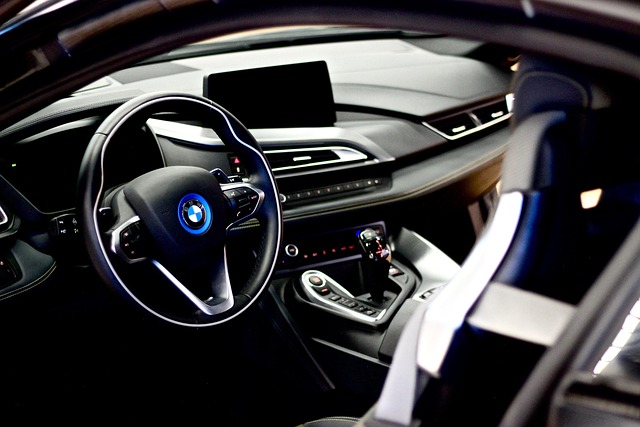Before installing a car camera, choose an In-Car Infotainment system suitable for your vehicle, considering safety features and multimedia capabilities. Mount the camera strategically on the dashboard or center console for optimal view. Ensure proper integration by selecting systems with compatible connectors and adapters. Test and customize camera settings through In-Car Infotainment platforms like Android Auto or Apple CarPlay. Comply with regional laws regarding in-car recording devices while leveraging legal protections offered by high-end systems.
Stay safe on the road with a car camera. This comprehensive guide helps you navigate installing your own in-car surveillance system. From understanding your vehicle’s in-dash system and selecting the right camera, to optimal mounting, wiring connections, testing configurations, and legal considerations, we cover it all. Discover how to choose the best In-Car Infotainment for enhanced safety and peace of mind.
- Understand Your Vehicle's In-Dash System
- Choose the Right Camera for Your Needs
- Mounting: Ensuring Optimal Placement
- Wiring and Power Connections
- Testing and Configuration Settings
- Legal Considerations for In-Car Cameras
Understand Your Vehicle's In-Dash System

Before installing a car camera, understanding your vehicle’s in-dash system is crucial. Modern cars come equipped with advanced in-car infotainment systems that serve as the central command center for navigation, music, and various driver assists. These systems range from basic, non-touch screens to high-end car entertainment solutions with sophisticated features. The first step is to select in-car infotainment that matches your vehicle’s make and model. Many affordable car audio systems offer essential connectivity options, while premium alternatives boast larger touchscreens, better sound quality, and advanced functionality.
Once you’ve chosen the appropriate in-dash system, you can start planning its installation. This process typically involves mounting the unit into your dashboard, connecting it to your vehicle’s electrical system, and ensuring proper integration with other components like your stereo, GPS, and camera inputs. A seamless setup not only enhances your car’s safety features but also provides a more enjoyable driving experience.
Choose the Right Camera for Your Needs

When installing a car camera, selecting the right model that aligns with your needs is paramount. Modern in-car infotainment systems, such as touchscreen infotainment consoles, offer advanced features that can enhance driving safety. These devices not only provide real-time vehicle diagnostics but also integrate music streaming services for cars, making them multifunctional tools.
Consider your primary use case when choosing a camera. If you prioritize driver assistance and safety features, opt for models with advanced capabilities like collision detection, lane departure warnings, and night vision. For those seeking a more comprehensive monitoring system, cameras with wide-angle lenses and high-resolution video can capture a broader field of view, ensuring every detail is recorded.
Mounting: Ensuring Optimal Placement

When setting up your car camera, mounting is a crucial step that requires careful consideration. The goal is to find an optimal location that offers clear visibility and does not obstruct the driver’s line of sight. Many modern cars come equipped with interactive in-cabin experiences and affordable car audio systems, making it easier to select an ideal mount point. These systems often include adjustable brackets and flexible arms, allowing you to position the camera precisely where you need it.
For example, mounting the camera on the dashboard or a center console can provide a wide field of view, capturing both the road ahead and nearby activities inside the vehicle. This is particularly important for not only enhancing safety but also enabling handsfree calling and messaging, adding an extra layer of convenience during your travels. Ensure that the camera’s placement adheres to local regulations and doesn’t interfere with your vehicle’s operation or other critical components.
Wiring and Power Connections

When installing a car camera for safety purposes, proper wiring and power connections are paramount. The first step is to identify the suitable location for the camera within your vehicle. Many modern cars come equipped with in-car infotainment systems that can be leveraged for power and video output. Select an In-Car Infotainment system that offers both audio and video interfaces, allowing you to seamlessly integrate the camera without compromising on existing features like voice-controlled climate control or syncing music across devices.
Ensure that your chosen affordable car audio systems have the necessary connectors and adapters to facilitate a clean installation. Proper grounding is also crucial to prevent interference with other electrical components. By carefully managing the wiring and power connections, you can maintain the functionality of all your in-car features while enhancing vehicle safety through the new camera setup.
Testing and Configuration Settings

After installing your car camera, it’s crucial to test and configure its settings properly. Start by integrating the device with your in-car infotainment system. Many modern vehicles come equipped with Android Auto for vehicles or Apple CarPlay, which allows you to seamlessly connect your smartphone and access GPS mapping software directly on your dashboard. This not only enhances navigation but also enables location-based recommendations tailored to your drive.
During configuration, ensure the camera’s settings align with your safety goals. Adjust resolution, field of view, and recording modes according to your preferences. Some advanced systems offer night vision capabilities or motion detection alerts, further bolstering your vehicle’s security. Regular testing will ensure the camera functions optimally in various driving conditions, providing peace of mind on the road.
Legal Considerations for In-Car Cameras

When installing a car camera for safety purposes, it’s crucial to understand the legal considerations that come into play. Different regions have varying regulations regarding in-car recording devices. Some countries mandate that drivers be aware that their vehicles are being recorded while others require explicit consent from all occupants before capturing any footage. Additionally, there are restrictions on where cameras can be placed for optimal visibility without invading privacy. For instance, capturing images through a driver’s rearview mirror or targeting passengers in the back seat may not be permitted.
Choosing the right In-Car Infotainment system that incorporates these legal considerations is essential. High-end car entertainment systems often come with features designed to protect user privacy and comply with regional laws. These systems can facilitate handsfree calling and messaging, which reduces distractions while driving. Moreover, cloud-based car services provided by such systems ensure data security and backup, allowing you to access recordings from anywhere, as long as it’s legal to do so.
Installing a car camera enhances your safety by providing real-time video footage and crucial evidence in case of an accident. By understanding your vehicle’s in-dash system, choosing the right camera for your needs, ensuring optimal mounting, making correct wiring connections, testing configuration settings, and adhering to legal considerations, you can harness the power of In-Car Infotainment to protect yourself on the road.
